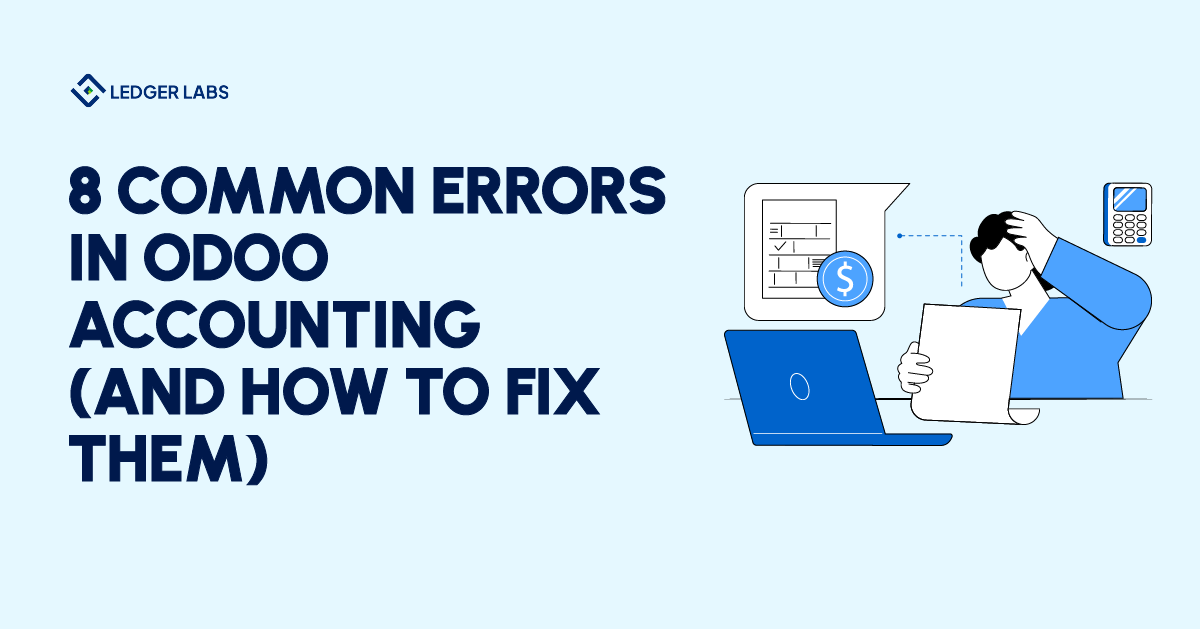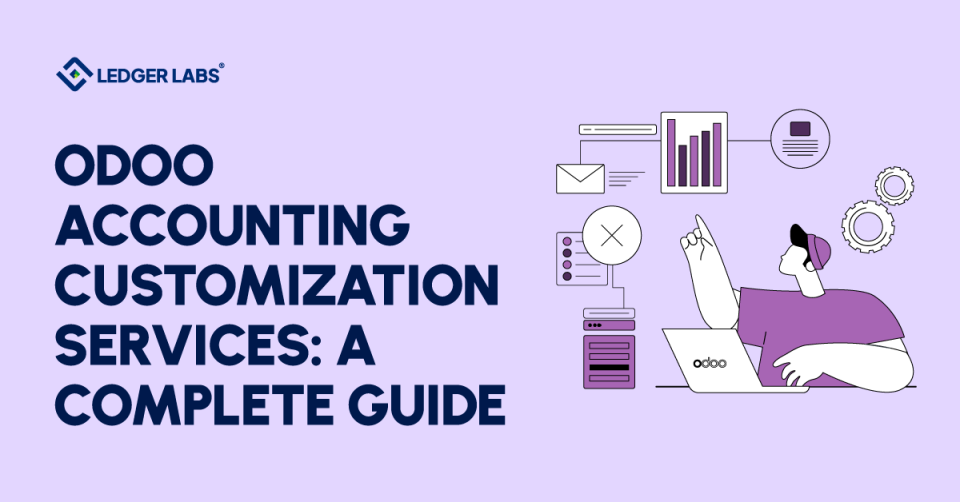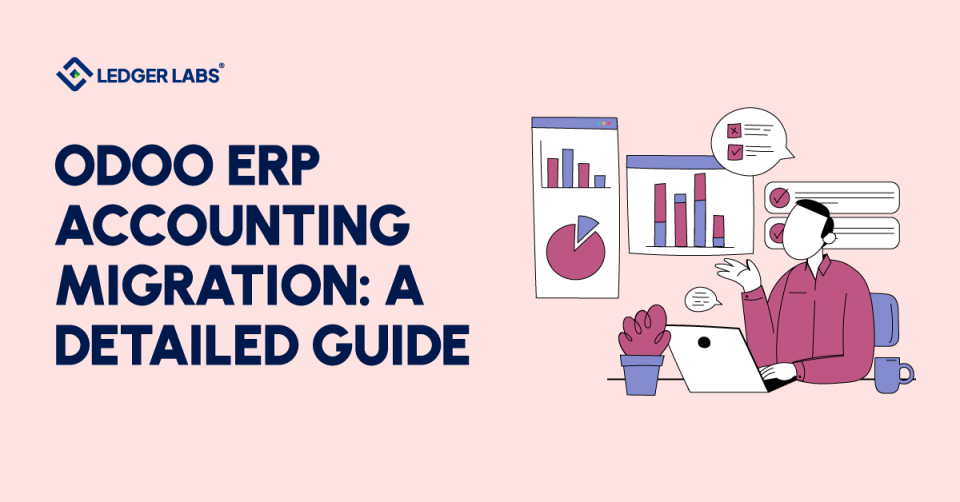Odoo has over 13 million users across the world.
It’s one of the most preferred ERP tools for small and large businesses alike, meaning that it’s a jack-of-all-trades kind of tool that simplifies all your accounting operations.
That includes inventory management, sales, accounting, and other parts of your business, all under the same roof, all accessible through the same tool.
That’s the upside.
Now for the downside.
When Odoo accounting is configured without a strategy, the damage can be expensive and invisible. You might not see it right away. Your dashboard might still show a balance. Your invoices might still go out.
But over time, errors in setup and workflow begin to pile up, leading to inaccurate books, audit exposure, and cash flow decisions made on false data.
The truth is, most Odoo accounting errors are preventable. They don’t come from bugs. They come from rushing through setup, overrelying on defaults, or failing to understand how Odoo’s modules interact beneath the surface.
In this guide, we’ll walk through the most common accounting mistakes made in Odoo and show you how to correct them before they compound into something costly.
- A poorly structured Chart of Accounts leads to inconsistent reporting and inaccurate margins. Tailor your CoA to your business model to ensure clean financial data and meaningful decision-making.
- Misconfigured tax rules in Odoo often result in overcharging, underreporting, or compliance risk. Always integrate tax automation tools and define geo-specific tax logic for accurate filings.
- Inventory errors, especially with valuation methods or landed costs, can silently distort profitability. Use FIFO, automate stock reconciliation, and ensure all product movements are accurately reflected on financial statements.
- Bank reconciliation isn’t optional. Reconcile weekly, not quarterly, and match all transactions to journal entries to prevent cash flow misunderstandings and accounting mismatches.
- Allowing manual journal entries without proper controls can compromise your ledger’s integrity. Restrict permissions, enforce approval workflows, and document every adjustment clearly to maintain audit readiness.
- Closing the books without a structured month-end process leads to reporting delays and missed issues. Use a checklist, assign owners, and finalize reports promptly for financial consistency and clarity.
1. The Chart of Accounts Is Sloppy or Incomplete
Your Chart of Accounts (CoA) is the foundation of everything.
If you get this wrong, no amount of cleanup later will give you reliable financials. We’ve seen eCommerce companies operating with 140+ accounts, most of them unused, miscategorized, or redundant.
This strategy is dangerous, if not reckless.
When revenue, expenses, or inventory costs are recorded inconsistently, reports become impossible to trust.
- A common error is lumping different activities into vague categories like “miscellaneous” or using catch-all expense lines.
- Another is failing to distinguish between direct costs (COGS) and overhead, which distorts your gross margin.
- Even worse, companies often build a CoA based on a legacy business model that no longer reflects how they operate.
For you to fix this immediately, start with a clean CoA tailored to your business type.
Don’t copy one from a template without adjusting it for your revenue streams, cost structure, and reporting needs.
You can use structured naming, segment direct and indirect costs, and tie everything to your reporting goals. A clean CoA won’t just improve your reports, it will improve your judgment.
Also Read: How to Use Odoo for eCommerce
2. Tax Rules Are Misconfigured (Or Missing)
Sales tax is one of the fastest ways to end up non-compliant. If you sell in multiple states or countries, the complexity multiplies fast. Unfortunately, many Odoo users treat tax configuration in the US as a checkbox item.
They apply a blanket tax rule, forget about exemptions, and assume everything will reconcile at year-end. That’s not how it works.
We’ve seen businesses unintentionally overcharge tax on exempt items, underreport cross-border sales, or miscalculate VAT due to incorrect fiscal positions.
One client had over $16,000 in unpaid state tax liabilities, discovered only during a routine sales tax nexus audit. The issue was that their product categories weren’t properly mapped to state-specific rules, and Odoo was applying a default rate across all orders.
The fix requires more than toggling tax settings. You need to define tax grids per jurisdiction, integrate with compliance platforms like Avalara or TaxJar, and map each product and customer class accordingly. You can even partner with online tax filing services to fix this for your business for good.
Every state has its own rules. Every country handles VAT differently. If you’re not clear on the difference between sales tax and use tax, reverse charge, and input credit, you shouldn’t be doing this manually.
3. Not Enough Attention Towards Bank Reconciliation
Bank reconciliation is where you find out if your books reflect your actual cash or not. Yet many businesses treat it as optional. They rely on automated bank feeds but never review them.
Or worse, they manually upload statements but fail to match transactions correctly, leading to phantom cash on the balance sheet.
Without reconciliation, you can’t trust your reports.
You don’t know if a customer payment bounced, if a vendor refund was posted, or if your Stripe fees were properly recorded.
We’ve audited companies that showed tens of thousands in “bank balance” when the actual account was nearly empty. And most times, the problem was Weeks or months of unreconciled statements.
Odoo has a powerful reconciliation widget.
You can use it weekly to set rules for common transaction types, vendor payments, transfers, fees, and then review exceptions manually. Build a habit of checking not just the numbers, but the logic. Attention to detail is what separates clean books from guesswork.
4. Inventory Accounting Is Inaccurate or Delayed
Inventory sits on your balance sheet and flows through your profit and loss, but it only does so correctly if your valuation method is properly configured.
Many Odoo users default to Standard Cost when they should be using FIFO.
Others never turn on Landed Cost, so freight and customs fees are recorded as operating expenses instead of part of the inventory value. That alone can misstate margins by tens of thousands per year.
Even worse, some companies don’t reconcile their stock movements with financial records.
Inventory gets updated in the warehouse but not in accounting. Purchases get logged but never matched to stock receipts. COGS is calculated off assumptions, not actuals. This ultimately leads to a balance sheet that looks fine on the surface but doesn’t reflect economic reality. You can do much better with your inventory management than this.
To correct this, choose a valuation method that matches your business model.
For most e-commerce brands, FIFO combined with perpetual inventory tracking is the most accurate. Turn on Landed Cost and allocate freight, duties, and fees to your stock items.
And don’t skip reconciliation either. Do a monthly check of your stock valuation reports against physical inventory and purchasing journals.
Also Read: 6 Odoo Bookkeeping Automations You’re Not Using (But Should Be)
5. Journal Entries Are Created Without Oversight
Odoo lets you create manual journal entries.
However, without internal controls, anyone with access can post adjusting entries that override system-generated logic.
This often happens when staff don’t fully understand the accounting implications and use journal entries to “force a fix.”
One of the most common mistakes that most business owners and Odoo accountants make is backdating entries to prior periods without reconciliation.
Another mistake is reclassifying revenue or expenses across unrelated accounts, just to “make the report look right.” Over time, this undermines the integrity of your ledger and complicates audit trails.
- You can avoid this by setting user permissions carefully. Only allow trained finance staff or your accounting partner to post manual entries.
- Use draft mode and approval workflows, and keep a log of recurring adjustments (like accruals, depreciation, or intercompany charges).
- And above all, remember that every journal entry should have a reason and documentation to back it up.
6. Accounts Receivable and Payable Are Disconnected from Cash Flow
A customer invoice is not cash.
A vendor bill is not a payment.
Many businesses confuse the two, and as a result, their financial reports don’t match their bank account.
Accounts Receivable (AR) and Accounts Payable (AP) need to be tied into cash planning, not just left as pending records.
- Align your invoicing and bill payment workflows with your reconciliation process.
- Only mark invoices as paid once the payment hits your bank. Use aging reports weekly, not quarterly.
We’ve seen companies that mark invoices as paid without matching the actual payment date. Or they record vendor bills as cleared, even when the money hasn’t left their account. This creates mismatches that delay the month-end close and distort real cash flow visibility.
7. Too Much Faith in Default Settings
One of the most common errors in Odoo accounting isn’t a specific number.
It’s the mindset of “set it and forget it.”
Odoo ships with default fiscal positions, tax codes, accounts, and roles. These are starting points. They’re not designed to reflect your business.
Yet every business needs a personalized accounting software, tweaked only for that particular business.
We’ve seen clients go live without changing currency settings, fiscal year dates, or even user permissions. The result is usually a silent failure. Reports don’t align. Dashboards show bad data. Or worse, someone ends up with access to sensitive financial records they shouldn’t be touching.
Before you go live, audit every setting.
Ask whether each fiscal position matches your operational geography. Double-check that journals are mapped correctly. Limit access to only what’s needed.
Defaults are just that—defaults. You need an intentional setup, not autopilot.
8. No Consistent Month-End Close Process
Month-end close is the heartbeat of good accounting.
It’s where you confirm what really happened last month, reconcile it against expectations, and prepare clean data for decision-making.
Yet many businesses close “whenever someone has time,” if at all.
And the result of this is delayed reports, last-minute corrections, and a lack of trust in financials.
A real close process is predictable and repeatable. It involves bank reconciliation, AR and AP aging, payroll review, inventory reconciliation, and adjusting entries.
It doesn’t happen by accident. It happens because someone owns it, and it’s scheduled like clockwork.
You don’t need a large team to close the books well. You need a checklist, a calendar, and the discipline to follow through. Whether you do it internally or through an Odoo expert firm like Ledger Labs, the key is consistency. Close fast, close clean, and move forward with confidence.
Also Read: Odoo Accounting Firm vs. In-House Team: What Saves More in the Long Run?
How To Get Clean Data & Clear Decisions With Odoo?
Odoo gives you the tools to build a smart, integrated accounting system.
But tools alone don’t prevent errors. Most problems we’ve seen (and solved) aren’t technical. They’re architectural. They come from skipping steps, ignoring warnings, or treating ERP setup like Netsuite implementation like a weekend project.
Your accounting system should reflect how your business operates today, not how it looked a year ago, or how you hoped it would work.
If your Odoo accounting feels like a black box, or worse, a liability, it’s time to take a step back and let somebody set it up for you. Somebody who has been doing it for 12+ years for their clients.
At Ledger Labs, we specialize in building bulletproof accounting systems inside Odoo. Not just clean books, but systems that scale, systems that comply, and systems you can actually use.
Book a call with us and let us help you get rid of all kinds of errors and problems with your current Odoo setup so that this tool works for you, not against you.












